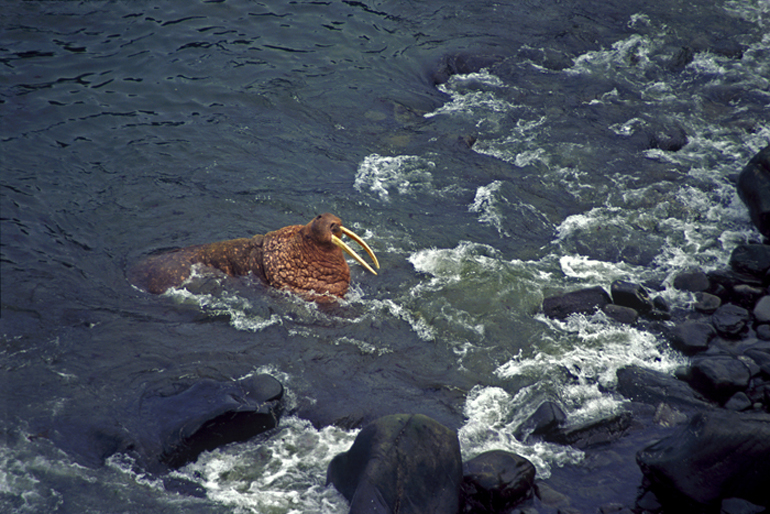
The extent of environmental destruction by man
has been nothing less than a spiritual divestment,
a renunciation of past and future.
George Schaller
Round Island is ridiculously remote, even by Alaska standards. It is 20 miles off the southwest coast, in Bristol Bay, and a hundred miles or so from the nearest road and airport, located in the fishing village of Dillingham. It is a place seldom seen by anyone but lost fishermen and wildlfe photographers. Naturally I had to check it out.
This two mile chunk of rock is a wildlife refuge for walrus. About 15,000 of these heavyweights "haul out" here and relax during the brief boreal summer. The reason walrus gather on Round Island is because people don't. No more than six visitors are allowed at one time. I seldom saw another soul during my five days there.
The walrus' glistening white tusks are huge, elongated canine teeth, coveted by the world's ivory trade. They are multipurpose with some of the actions suggesting tool use. They are principally used in fighting, but also as an "ice axe" to hoist the beast's considerable bulk onto ice floes, and as "ski poles" to propel them along the ocean bottom as they search for clams.
As with the elephant, this remarkable tusk has been the species downfall, the basis for poaching to near extinction in some cases. Today walrus are found in only a few scattered herds in the arctic and subarctic realms. Gone are thriving populations in the North Atlantic, around Labrador, and at the mouth of the St. Lawrence River. This latter herd was once more than 250,000 strong. Now it is zero weak. Someone forgot to tell these hunters that if you kill all the walrus there will not be any left. And no walrus equals no tusks, which, if you're selling tusks for income, generally means no paycheck. Admittedly these can be hard concepts to grasp.